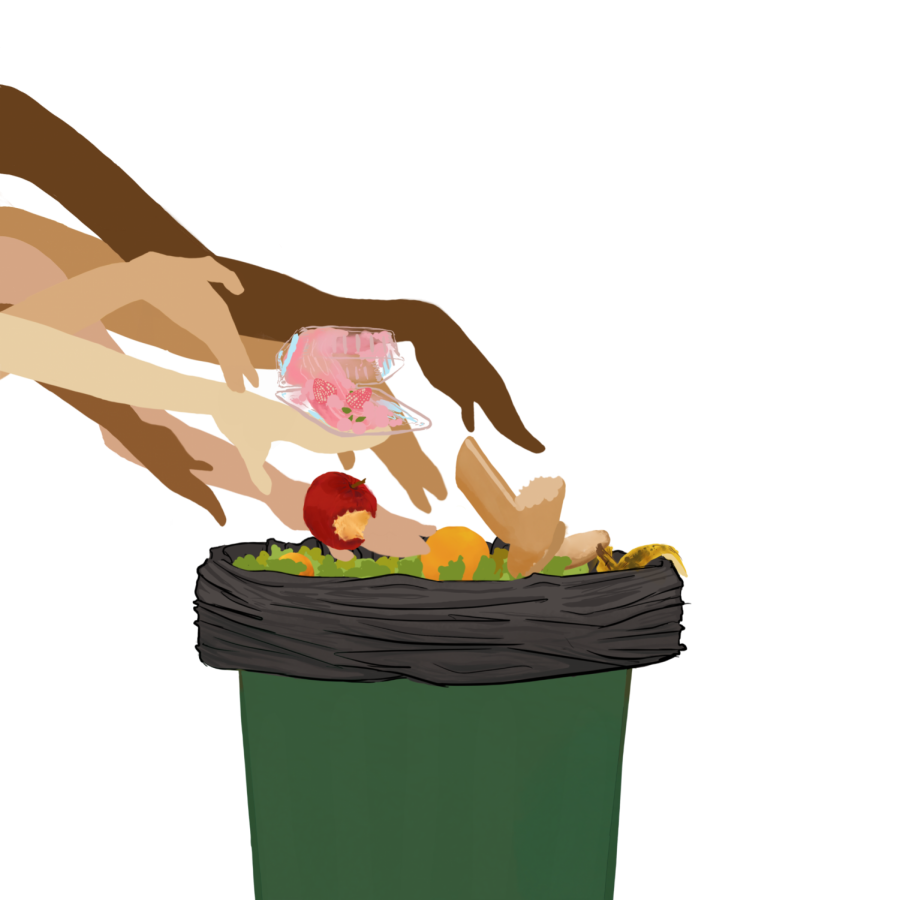Let’s talk food waste
Examining the factors leading to food waste at MVHS
November 4, 2021
Untouched breadsticks in the trash, crushed muffins on the floor and rotting bananas left in backpacks are common sights at school. And accompanying them are the myriad of complaints about the school cafeteria food, ranging from the quality of the ingredients to the portion size, that ring through the student union and echo across the rally court during brunch and lunch. These occurrences highlight the urgent issue of food waste and its causes.
There is no question that food waste is a serious problem — around 30 to 40 percent of the food supply in the U.S. is lost to food waste. However, the problem has been largely overlooked by an apathetic student body, and aggravated by the free meal policy, food quality and other factors.
The state-wide free school lunch program, which was implemented in the beginning of the 2021-22 school year, qualifies all students for free meals, regardless of family income. The policy undoubtedly has benefits, such as targeting food insecurity and improving student health, particularly for students from low-income families.
At the same time, however, students are now incentivized to take food items that they wouldn’t have normally taken, simply because they are free. The free meal policy inadvertently creates a harmful mindset where students, because they associate little to no value with school meals, are indifferent to throwing them away. While there have been measures taken at MVHS to minimize food waste — for example, the addition of food share bins in the student union for unwanted fruit that would otherwise be tossed in the trash — students are still just as likely to toss their untouched meals into the trash.
Of course, food waste stems beyond simply the new policy — there are many other aspects that play a part in the problem. The cafeteria must account for a variety of dietary restrictions, all the while meeting the specific nutrition requirements set by the government. As a result, the staff struggles to balance these regulations with food taste and quality, leading to criticism from students. The degradation of cafeteria food thus aggravates the insensitivity around food waste, feeding into the mindset where students don’t realize the gravity of their actions when they throw leftovers away. Because they see others around them doing the same, students begin to develop similar attitudes and behaviors.
Additionally, some students have meetings or other commitments during lunch and aren’t allowed to eat in classrooms due to COVID-19 mask restrictions, leaving them no time to finish their meals, thus throwing them away. Beyond lunch activities, some people may not be able to finish simply because they spent too much time in long lines waiting to get their food — a problem that, although worsened by the free meal policy, the school has tried to remedy by adding a third line in the main gym lobby. Other students feel pressure from their parents to accept the free meals on the basis that they are free and it’s more convenient, although students themselves may not want to eat it.
In order to combat food waste at school, students need to be more aware of the implications of throwing away their meals. Small changes can make a difference — whether that be by simply not getting the food they know they won’t eat or by saving it as leftovers to eat at a later time. Simple habits such as planning ahead to bring lunch as needed are an important step towards reducing food waste, and when implemented at a school-wide level, would reinforce sustainable eating habits.

















